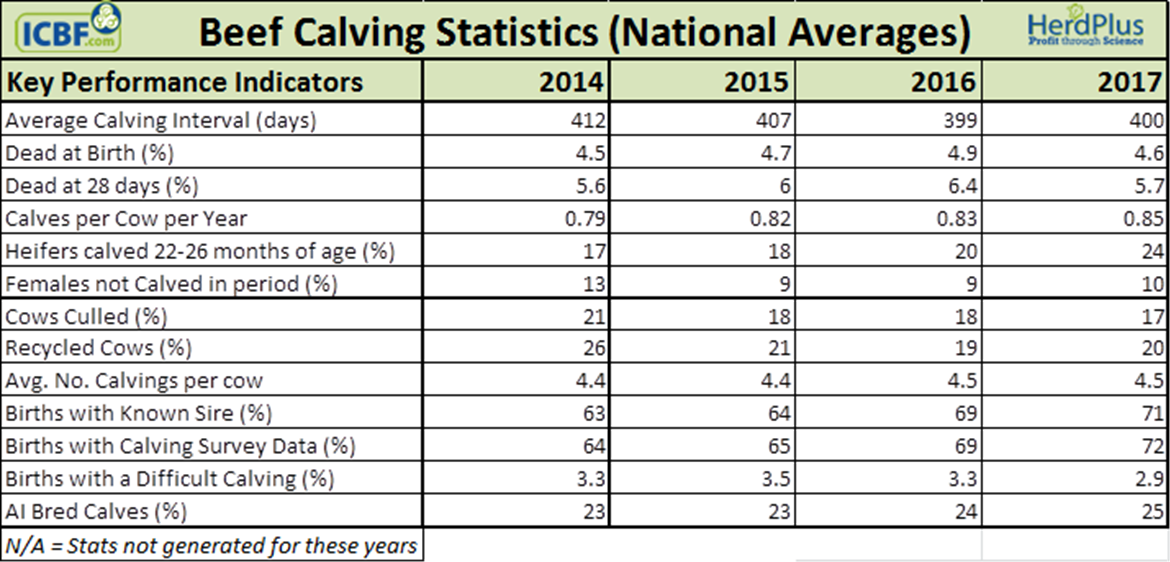The 2017 HerdPlus Beef Calving reports were published recently. This report is designed to give farmers an in depth insight into the reproductive performance of their herds. The calving reports run from mid-year, therefore the 2017 data covers the period from 1st July 2016 to 30th June 2017.
The national beef herd has again seen some positive trends taking place after the publishing of the national beef calvings stats. Positive trends are apparent for important fertility parameters such as calves per cow per year which has increased from 0.83 to 0.85, percentage of heifers calved 22-26 months of age has increased from 20% to 24% and mortality has also improved on the 2016 figure(See Table 1 below). The average calving interval has seen a slight increase from 399 days in 2016, to 400 days in 2017. There is still a lot of room for improvement with the figure for calving interval fluctuating up and down over the past number of years (See graph above). Therefore, it’s important that we continue to focus on high Euro-Star bulls with high stars for ‘Daughter Calving Interval’.

The percentage of heifers calved 22-26 months of age is showing slow but steady improvement as can be seen in “Table 1″ above. An important aspect of calving beef heifers at 24 months is making sure that they meet target weights. Weighing all cattle is good practice and this is particularly true for replacement heifers. Farmers can do this by using their own scales and subsequently recording weights on the ICBF website, or they can avail of the ICBF technician service. Once heifers are weighed farmers can assess performance levels accurately and see where their heifers stand in relation to targets. The table below gives a simple outline of target weights at different ages, for calving beef heifers at 24 months.

The top 5% of herds had a calving interval of 354 days which equates to a calving interval that is all of 6.6 weeks better than the figure for the national herd average of 400 days. This figure is some way behind that of the top 5% and with the calving interval figure for the national herd showing slow improvement over the past half-decade, it has never been so important that we focus our breeding on bulls with a high Euro-Star Replacement index with a high calving interval figure.
Year on year figures indicate that we are moving in the right direction, however with a slow rate of improvement it is important to focus on improving the fertility of the national herd. With the introduction of the Beef Data and Genomics Programme and more focus on 4 and 5 star replacement breeding stock as a result, the national herd will see improvement to this figure in the future and the trend for future years will show a more positive outcome as a result of this.
A full listing of all the beef statistics can be found on the ICBF Statistics page. If you have any questions on the calving report, the above statistics, or the Euro-Star ratings of animals, please do not hesitate to call ICBF HerdPlus® on 023 88 20452.
